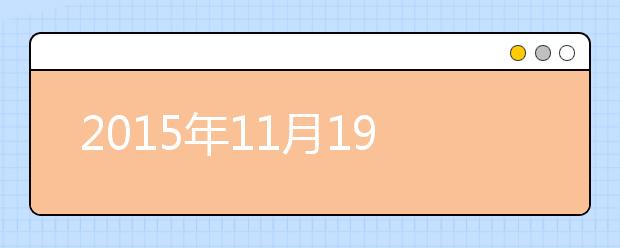当前城市:淄博[切换]
- 手机雅思无忧

扫码登录
雅思考试主要是通过对考生听、说、读、写四个方面英语能力的考核,综合测评考生的英语沟通运用能力,实现“沟通为本”的考试理念。对于雅思考生来说,也有很多考试难点和政策盲区需要帮助解答。今天雅思无忧网小编准备了文章2021年11月19日雅思阅读机经,希望通过文章来解决雅思考生这方面的疑难问题,敬请关注。
|
2021年11月19日
考题回忆
——来自 教研中心 |
||||
|
Passage
One |
新旧情况 | 题材 | 题目 | 题型 |
| 旧 | 动物类 | 恐龙灭 |
判断 6
摘要填空 7 |
|
| 文章大意 | 人们认为恐龙的灭是因为陨石,有一个科学认为恐龙的繁荣也因陨石,恐龙比人们认为的要小,恐龙的足迹并不能够用来精确的辨别出不同的物种,在岛屿上的蜥蜴生长的体型很大,因为没有竞争生物。陨石坑在海里很难发现,因为板块发生了漂移。 | |||
| 答案 |
1. 人们对于恐龙是否因陨石而灭还有争论 NO
2. 恐龙比电影和书籍里描述的要小 YES 3. 恐龙的足迹能够辨别出不同的物种 NO 填空: dragons competition overlooked (答案仅供参考) |
|||
|
Passage
Two |
新旧情况 | 题材 | 题目 | 题型 |
| 旧 | 科技类 | 来自自然的灵感 |
段落细节配对 4
摘要填空 5 人名细节配对 4 |
|
| 文章大意 | 一种甲虫通过张开翅膀,在日出之前收集露水来获得饮水,这种过程像是打过蜡的车,碰到雨水后会沿着轨迹流下来。自然界中的灵感能够被运用到生产,设计当中,蜘蛛吐的丝很坚韧,能够被借鉴到工业生产中,还能够用到医疗行业。在重要的行业当中,也能够运用到借鉴自然的设计。 | |||
| 答案 |
段落细节配对: medical use 原文中是 wounds
most important 原文中是 essential 填空:sun fog wind mouth roof (待补充) |
|||
|
Passage
Three |
新旧情况 | 题材 | 题目 | 题型 |
| 旧 | 人类行为研究类 |
标题配对题 8
判断 5 单选 1 |
||
| 文章: |
READING PASSAGE 3
You should spend about 20 minutes on Questions 27-40 which are based on Reading Passage 3 on the following page. Questions 27-34 Reading Passage 3 has eight sections A-H. Choose the correct heading for each section from the list of headings below. Write the correct number i-x in boxes 27-34 on your answer sheet. List of Headings i Summarizing personality types ii Combined styles for workplace iii Physical explanation iv A lively person who encourages v Demanding and unsympathetic personality vi Lazy and careless personality vii The benefits of understanding communication styles viii Cautious and caring ix Factual and *ytical personality x Self-asses*ent determines one’s temperament 27 Section A 28 Section B 29 Section C 30 Section D 31 Section E 32 Section F 33 Section G 34 Section H Communicating Styles and Conflict Knowing your communication style and having a mix of styles on your team can provide a positive force for resolving conflict. Section A As far back as Hippocrates’ time (460-370 B. C.) people have tried to under stand other people by characterizing them according to personality type or temperament. Hippocrates believed there were four different body fluids that influenced four basic types of temperament. His work was further developed 500 years later by Galen (130-200 A. D.). These days there are any number of self-asses*ent tools that relate to the basic descriptions developed by Galen, although we no longer believe the source to be the types of body fluid that dominate our systems. Section B The value in self-asses*ents that help determine personality style, learning styles, communication styles, conflict- handling styles, or other aspects of individuals is that they help depersonalize conflict in interpersonal relationships. The depersonalization occurs when you realize that others aren’t trying to be difficult, but they need different or more information than you do. They’re not intending to be rude; they are so focused on the task they forget about greeting people. They would like to work faster but not at the risk of damaging the relationships needed to get the job done. They understand there is a job to do, but it can only be done right with the appropriate information, which takes time to collect. When used appropriately, understanding communication styles can help resolve conflict on teams. Very rarely are conflicts true personality issues. Usually they are issues of style, information needs, or focus. Section C Hippocrates and later Galen determined there were four basic temperaments: sanguine, phlegmatic, melancholic and choleric. These descriptions were developed centuries ago and are still somewhat apt, although you could update the wording. In today’s world, they translate into the four fairly common communication styles described below: Section D The sanguine person would be the expressive or spirited style of communication. These people speak in pictures. They invest a lot of emotion and energy in their communication and often speak quickly, putting their whole body into it. They are easily sidetracked onto a story that may or may not illustrate the point they are trying to make. Because of their enthusia* they are great team motivators. They are concerned about people and relationships. Their high levels of energy can come on strong at times and their focus is usually on the bigger picture, which means they sometimes miss the details or the proper order of things. These people find conflict or differences of opinion invigorating and love to engage in a spirited discussion. They love change and are constantly looking for new and exciting adventures. Section E The phlegmatic person — cool and persevering — translates into the technical or systematic communication style. This style of communication is focused on facts and technical details. Phlegmatic people have an orderly methodical way of approaching tasks, and their focus is very much on the task, not on the people, emotions, or concerns that the task may evoke. The focus is also more on the details necessary to accomplish a task. Sometimes the details overwhelm the big picture and focus needs to be brought back to the context of the task. People with this style think the facts should speak for themselves, and they are not as comfortable with conflict. They need time to adapt to change and need to understand both the logic of it and the steps involved. Section F The melancholic person who is softhearted and oriented toward doing things for others translates into the considerate or sympathetic communication style. A person with this communication style is focused on people and relationships. They are good listeners and do things for other people — sometimes to the detriment of getting things done for themselves. They want to solicit everyone’s opinion and make sure everyone is comfortable with whatever is required to get the job done. At times this focus on others can distract from the task at hand. Because they are so concerned with the needs of others and *oothing over issues, they do not like conflict. They believe that change threatens the status quo and tends to make people feel uneasy so people with this communication style, like phlegmatic people, need time to consider the changes in order to adapt to them. Section G The choleric temperament translates into the bold or direct style of communication. People with this style are brief in their communication — the fewer words the better. They are big picture thinkers and love to be involved in many things at once. They are focused on tasks and outcomes and often forget that the people involved in carrying out the tasks have needs. They don’t do detail work easily and as a result can often underestimate how much time it takes to achieve the task. Because they are so direct, they often seem forceful and can be very intimidating to others. They usually would welcome someone challenging them, but most other styles are afraid to do so. They also thrive on change, the more the better. Section H A well-functioning team should have all of these communication styles for true effectiveness. All teams need to focus on the task, and they need to take care of relationships in order to achieve those tasks. They need the big picture perspective or the context of their work, and they need the details to be identified and taken care of for success. We all have aspects of each style within us. Some of us can easily move from one style to another and adapt our style to the needs of the situation at hand — whether the focus is on tasks or relationships. For others, a dominant style is very evident, and it is more challenging to see the situation from the perspective of another style. The work environment can influence communication styles either by the type of work that is required or by the predominance of one style reflected in that environment. Some people use one style at work and another at home. The good news about communication styles is that we all have the ability to develop flexibility in our styles. The greater the flexibility we have, the more skilled we usually are at handling possible and actual conflicts. Usually it has to be relevant to us to do so, either because we think it is important or because there are incentives in our environment to encourage it. The key is that we have to want to become flexible with our communication style. As Henry Ford said, "Whether you think you can or you can’t, you’re right!" Questions 35-39 Do the following statements agree with the information given in Reading Passage 3? In boxes 35-39 on your answer sheet write TRUE if the statement agrees with the information FALSE if the statement contradicts the information NOT GIVEN if there is no information on this 35 It is believed that sanguine people dislike variety. 36 Melancholic and phlegmatic people have similar characteristics. 37 Managers often select their best employees according to personality types. 38 It is possible to change one’s personality type. 39 Workplace environment can affect which communication style is most effective. Question 40 Choose the correct letter A, B, C or D. Write your answers in box 40 on your answer sheet. The writer believes using self-asses*ent tools can A help to develop one’s personality. B help to understand colleagues’ behavior. C improve one’s relationship with the employer. D directly resolve conflicts. |
|||
| 部分答案 |
27. iii
28. vii 29. i 30. iv 31. ix 32. viii 33. v 34. ii 35. FALSE 36. TRUE 37. NOT GIVEN 38. TRUE 39. TRUE 40. B (答案仅供参考) |
|||
以上就是雅思无忧网为您准备的2021年11月19日雅思阅读机经访问雅思无忧网(https://www.yasi.cn/),了解更多雅思考试新消息,新动态。
 2015年11月19日雅思阅读机经
2015年11月19日雅思阅读机经
2015年11月19日雅思考笔已经结束,教研中心为各位雅思考生带来2015年11月19日,希望可以帮
2021年10月25日 08:16 2015年11月19日雅思写作机经
2015年11月19日雅思写作机经
2015年11月19日雅思考笔已经结束,教研中心为各位雅思考生带来2015年11月19日,希望可以帮
2021年10月25日 07:51 2015年11月19日雅思机经复习资料汇总
2015年11月19日雅思机经复习资料汇总
今天为各位雅思考生带来2015年11月19日复习资料汇总,希望可以帮助广大雅思考生轻松。更多信息,请
2021年10月25日 08:06 2015年11月19日雅思口语机经
2015年11月19日雅思口语机经
2015年11月19日部分考已经结束,为将此次考在时间分享给广大的雅思考生们,一线名师也参加此次考,
2021年10月25日 08:11 2015年11月19日雅思听力机经
2015年11月19日雅思听力机经
2015年11月19日雅思考笔已经结束,教研中心为各位雅思考生带来2015年11月19日,希望可以帮
2021年10月25日 08:21 2015年11月19日雅思写作机经
2015年11月19日雅思写作机经
2015年11月19日雅思考笔已经结束,教研中心为各位雅思考生带来2015年11月19日,希望可以帮
2022年01月21日 02:48 2015年11月19日雅思机经复习资料汇总
2015年11月19日雅思机经复习资料汇总
今天为各位雅思考生带来2015年11月19日复习资料汇总,希望可以帮助广大雅思考生轻松。更多信息,请
2022年01月21日 03:48 2015年11月19日雅思口语机经
2015年11月19日雅思口语机经
2015年11月19日部分考已经结束,为将此次考在时间分享给广大的雅思考生们,一线名师也参加此次考,
2022年01月21日 04:08 2015年11月19日雅思听力机经
2015年11月19日雅思听力机经
2015年11月19日雅思考笔已经结束,教研中心为各位雅思考生带来2015年11月19日,希望可以帮
2022年01月21日 04:48 2015年11月19日雅思考试城市通知
2015年11月19日雅思考试城市通知
雅思考试主要是通过对考生听、说、读、写四个方面英语能力的考核,综合测评考生的英语沟通运用能力,实现“
2022年12月22日 04:12